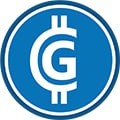PEPE Vs GME: Which Meme Coin is Close to $1?
0
0

Meme coins have officially taken over the crypto market with continuous gains and profits over the last few weeks. The gains are so high that no other cryptocurrency can beat the growth of meme coins, including Bitcoin. At the time of writing, the meme industry has grown to $60.5 Billion in market capitalization and offers $ 11 billion of transaction volume alone. More importantly, PEPE and GME were the top contributors to creating hype about meme cryptocurrencies with their impressive profits. So, in PEPE vs. GME, which one is the meme king, or will hit the $1 first? Let us discuss that in this blog.
PEPE Price Analysis
PEPE has made history after creating multiple all-time high records within two months. It has been on every investor’s portfolio because of its huge profit potential as the token has presented many profitable opportunities, making a hundred times in profit for their investors. PEPE price is at $0.00001222 after setting a new all-time high record of $0.00001274 two hours ago.
With the ongoing price surge, PEPE is ranked 24th on CoinmarketCap for its market cap of $5.14B and trading volume of $3.71B, which is up by 423%. Moreover, the token is still bullish, so the price may rise even higher if the trend continues.
GME Price Analysis
GME or Gamestop, is a newly launched Solana meme coin that has made huge gains recently. After its launch in February 2024, GME peaked at a high of $0.01352 before entering a downtrend. However, the price plummeted multiple times, creating an all-time high record of $0.0219 just a week ago. As for now, the Gamestop price has declined to $0.0219 after a 21% fall in the last 24 hours only. Moreover, its market cap and trading volume are down to $39,312,853 and $69,485,972.
What’s interesting about GME is that it was launched with a comparatively lower supply for a meme coin. Gamestop has a total supply of 6,885,214,218 GME, which is already in circulation. A small token amount is a beneficial factor for GME price, as the demand stays high when the supply is low.
Who Will Attain $1 First Between PEPE and GME?
PEPE and GME are the most popular meme coins because of their current gains. PEPE has an overall profit of 2158%, whereas GME has a 3% loss after its current decline. On comparing both the meme coins in terms of their market capitalization, PEPE is much above the GME because of two factors. First, PEPE has been in the market for longer than GME, so the demand is more for PEPE. Secondly, PEPE has a larger circulating supply of 420Trillion. However, this has also restricted the PEPE price from advancing as GME did earlier.
Also, the most important comparison comes from the price history of these meme coins. Despite being new to the crypto market, GME is much closer to $1 than PEPE as its price is $0.0219, whereas PEPE is $0.00001222. In contrast, GME doesn’t have much of a history in the crypto market, which also restricts the analysis of the price pattern and how the token will move next, whereas with PEPE, a tag of high gains is already attributed to this meme coin.
After carefully analyzing all the necessary metrics and market capability, PEPE is less likely to achieve the $1 mark. This is because PEPE has a huge circulating supply, and a market cap of trillions of dollars for a meme coin is not feasible for now. On the other hand, GME is already closer to $1 and has a short supply, making it easier to comprehend to see GME hitting $1 instead of PEPE.
Continue Reading Mina Vs XRP: Which Altcoin Is Close To $1 In 2024
The post PEPE Vs GME: Which Meme Coin is Close to $1? appeared first on CoinGape.
0
0











